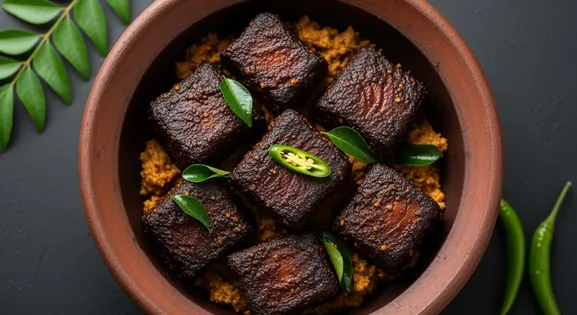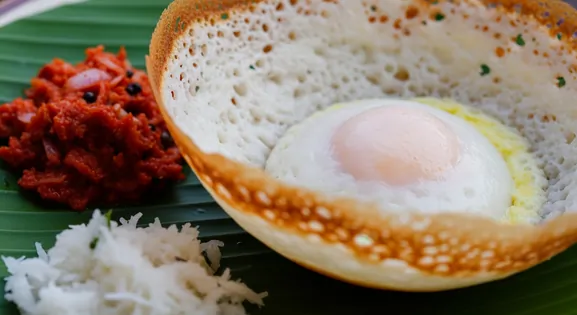
Ambulthiyal (Sour Fish Curry)
අම්බුල් තියල්Sour fish curry with goraka, no coconut milk.
Colombo's vibrant street food scene blends Tamil, Sinhalese, and colonial influences in a colorful culinary tapestry. Navigate bustling markets and oceanfront stalls to discover Sri Lanka's authentic flavors safely.
The bustling heart of Colombo's street food scene, best for authentic local snacks
Oceanfront promenade with regulated food stalls and spectacular sunset views
Historic complex with more upscale yet authentic Sri Lankan options
Best for hoppers and fresh breakfast items at local 'hotels'
Prime time for kottu roti and seafood at Galle Face Green
Many stalls close during peak heat when temperatures reach 86-90°F (30-32°C)
High turnover ensures fresher ingredients and established reputation
Protection from dust and insects indicates better food handling
Avoid tap water and ice made from unfiltered sources
Colombo's street food culture reflects Sri Lanka's rich heritage, where fragrant spices, coconut, and seafood form the backbone of local cuisine. Tamil, Sinhalese, Muslim, and colonial influences merge in this coastal capital, creating a diverse food landscape dominated by hoppers, kottu roti, and fresh seafood. Street vendors and small cafés known as 'hotels' serve affordable, authentic dishes from dawn until late evening.
Heavy rainfall can affect hygiene of open-air stalls
Humidity increases during monsoon, raising food spoilage risk
Safe, natural hydration during hot periods when temperatures reach 88-91°F (31-33°C)
Heat can accelerate spoilage of fish and shellfish
Sour fish curry with goraka, no coconut milk.
Bowl-shaped fermented rice flour crepe with crispy edges.
Tuna in vibrant red curry with goraka and spices.
Steamed rice flour noodles formed into flat, round nests.
Spicy deep-fried lentil fritter topped with whole prawns.
Whole crabs slow-cooked in rich, spiced coconut milk gravy.
Explore India's diverse culinary landscape from vibrant street food markets to regional specialties while navigating food safety considerations in this spice-rich gastronomic paradise.
Discover Nepal's diverse culinary landscape where Himalayan traditions meet Indian and Tibetan influences, offering unique street foods and local specialties with important safety considerations.
Discover Sri Lanka's aromatic cuisine blending coconut, spices, and fresh seafood across vibrant street markets and local eateries while navigating food safety in this tropical island paradise.
Discover East Asia's diverse culinary landscape, from Japan's meticulous sushi to China's regional specialties. Learn essential food safety tips for navigating seasonal changes while experiencing authentic cooking techniques.
Explore Europe's diverse culinary landscape, from Italian trattorias to Spanish tapas bars and French bistros. Discover essential safety practices while navigating seasonal markets, street food festivals, and authentic regional specialties across this gastronomic paradise.
Discover Latin America and the Caribbean's vibrant culinary landscape, from Mexico's spicy street tacos to Brazil's churrasco and Caribbean seafood delicacies. Navigate distinctive regional preparation methods while ensuring safety across diverse climates and bustling mercados.
Discover Oceania's diverse culinary landscape, from Australia's modern fusion to traditional Polynesian earth ovens. Learn essential food safety tips for navigating tropical conditions while experiencing authentic Pacific Island cooking techniques and fresh seafood.
Navigate Southeast Asia's vibrant street food scene, from Thailand's aromatic curries to Vietnam's fresh herbs and Malaysia's spice blends. Discover essential safety practices for enjoying authentic flavors while managing tropical climate challenges.
Discover South Asia's vibrant culinary landscape, from India's aromatic curries to Nepal's hearty dumplings. Learn essential food safety tips for navigating diverse street food scenes while experiencing authentic flavors in Delhi, Mumbai, Kathmandu, and Colombo.




